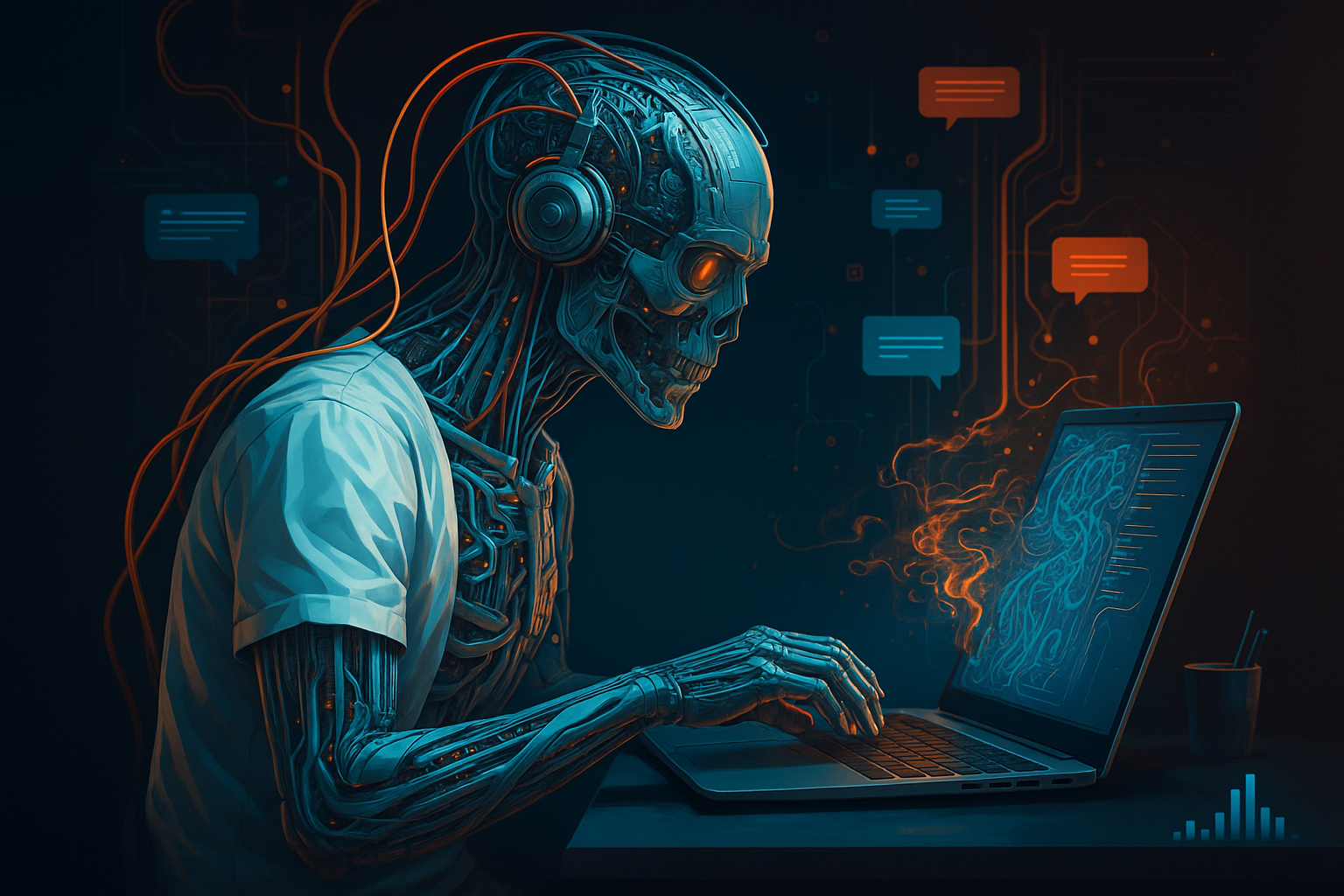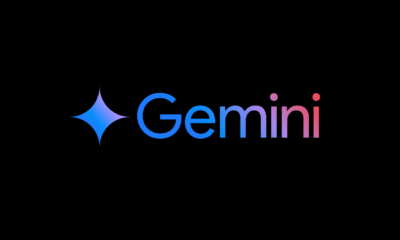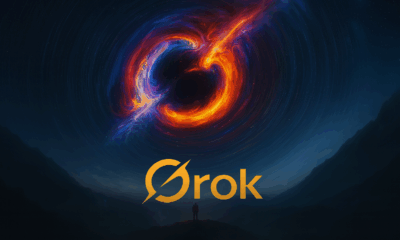News
AI Coding Assistants: Useful Sidekick or Overhyped Distraction?

- Share
- Tweet /data/web/virtuals/375883/virtual/www/domains/spaisee.com/wp-content/plugins/mvp-social-buttons/mvp-social-buttons.php on line 63
https://spaisee.com/wp-content/uploads/2025/07/coder-1000x600.png&description=AI Coding Assistants: Useful Sidekick or Overhyped Distraction?', 'pinterestShare', 'width=750,height=350'); return false;" title="Pin This Post">
The tech industry has long envisioned a future where artificial intelligence seamlessly augments the work of software developers, transforming code creation from a manual, intricate process into something closer to assisted magic. That vision has gained tremendous momentum in the past few years, spurred by tools like GitHub Copilot, Amazon CodeWhisperer, and other large language model–powered coding assistants. These systems promise to increase productivity, reduce routine workload, and democratize development—ideally making engineers faster and more efficient while opening the door for non-coders to participate in the software economy.
But what happens when those promises are stress-tested under real-world conditions, especially among the developers most capable of evaluating their effectiveness? A new study from the nonprofit research organization Model Evaluation & Threat Research (METR) suggests the AI narrative might be more illusion than revolution, at least for now, and especially for experienced engineers.
A Study That Challenges the Hype
METR’s recent investigation was one of the most comprehensive assessments yet of AI-assisted programming in a real-world setting. The researchers selected 16 highly skilled software developers, each with significant familiarity with specific, mature open-source codebases. These weren’t junior coders poking around in a tutorial environment—they were professionals accustomed to working deep within complex systems they knew intimately.
The participants were asked to complete a battery of 246 authentic tasks, ranging from bug fixes to feature additions and refactoring jobs. Half of the work was performed using state-of-the-art AI coding assistants, while the other half was executed without assistance. The experiment was rigorously structured to eliminate biases: developers estimated beforehand how much faster they believed AI would make them, and their actual task completion times were recorded to measure impact.
What METR found was jarring. Developers predicted they would be 24 percent faster with AI tools and reported afterward that they felt 20 percent more efficient. But the data told a different story. In truth, their task completion time increased by 19 percent when using AI assistants.
This unexpected result wasn’t just a minor deviation. It represents a substantial gap between perception and reality, suggesting that developers may overrate the usefulness of AI helpers when immersed in the coding experience. It also indicates that the tools themselves—despite producing plausible-looking code—can introduce inefficiencies that outweigh their intended productivity gains.
Why AI Isn’t Always Faster
At the heart of the productivity slowdown lies the quality and context-awareness of AI-generated code. While large language models have proven adept at suggesting syntax and completing functions in isolation, they often lack the project-specific understanding needed to make helpful contributions to a large, intricate codebase. Developers in the METR study spent considerable time reviewing, debugging, and modifying AI-generated suggestions. In total, they spent about 9 percent of their time cleaning up after their digital assistants.
Only 44 percent of AI suggestions were ultimately accepted, and even among those, many needed additional tweaking to meet the developers’ standards. When an engineer has deep familiarity with a codebase—knowing how modules interact, what conventions are followed, where bugs typically emerge—AI tools that operate with only surface-level context can easily become a hindrance rather than a help.
Interestingly, even though their work took longer, developers consistently reported feeling that coding was easier and more enjoyable when AI was involved. This paradox points to a complex dynamic: AI may reduce the perceived cognitive load of development without necessarily improving objective productivity. That may not be entirely negative—after all, enjoyment and reduced burnout are meaningful outcomes—but it does challenge the notion that AI assistants automatically deliver speed and efficiency gains across the board.
The Context Factor: Who Benefits Most?
The most telling conclusion from METR’s study is not that AI coding assistants don’t work, but that their effectiveness is highly contextual. The biggest beneficiaries of AI coding assistance are not expert developers working on familiar systems. Instead, novice coders, developers exploring unfamiliar projects, or engineers performing routine, boilerplate tasks often gain the most from AI support.
In educational settings, for instance, coding assistants can serve as real-time mentors, helping learners understand syntax and design patterns. In startup environments where teams are rapidly prototyping new features, AI can generate templates, test scaffolds, or placeholder logic that accelerates development. And for large teams managing repetitive tasks—like generating unit tests or basic data models—AI can reduce drudgery and free up attention for more strategic work.
But as METR’s research makes clear, those productivity advantages diminish in mature engineering environments where developers are already efficient and possess deep, internalized knowledge of the codebase. In those cases, AI must not only produce functional code but also align with architectural principles, performance expectations, and style conventions—requirements that current models still struggle to meet.
Misconceptions and Industry Optimism
Despite the findings, many in the tech industry remain enthusiastic about the long-term promise of AI in software development. GitHub CEO Thomas Dohmke, for example, acknowledges the limitations of current tools but maintains that AI coding assistants can accelerate startup growth and experimentation. He argues that while AI can help teams build early prototypes, scaling those systems into robust, secure products still requires experienced engineers.
GitLab CEO William Staples echoes that perspective, viewing AI as a force multiplier rather than a replacement. In his vision, coding becomes more accessible to a broader audience, increasing the overall pool of contributors to the software ecosystem. Far from shrinking the developer workforce, he believes AI will expand it, enabling more people to engage with code and bring their ideas to life.
These optimistic views are not necessarily at odds with METR’s findings. Rather, they highlight the need for a nuanced understanding. AI tools are not silver bullets that solve all programming challenges. They are best seen as collaborators whose value depends heavily on context, task complexity, and user expertise.
Risks and Responsibilities
Even as AI assistants become more sophisticated, they bring with them a suite of risks that cannot be ignored. One major concern is the possibility of hallucinated code—plausible-looking suggestions that contain logical flaws, security vulnerabilities, or subtle inconsistencies. These kinds of errors are especially dangerous in production systems, where a missed bug could have real-world consequences.
Moreover, AI-generated code can sometimes circumvent best practices or introduce inefficiencies that aren’t immediately obvious. If developers grow overly reliant on these tools, they risk losing touch with the deeper engineering skills needed to diagnose and optimize complex systems. In the worst-case scenario, teams could end up shipping software they don’t fully understand.
There’s also the question of accountability. If an AI assistant introduces a bug or security flaw, who is responsible? The developer who accepted the suggestion? The vendor that built the tool? The open-source community that trained the underlying model? As AI becomes more embedded in the software stack, these questions will grow more urgent, and legal frameworks have yet to catch up.
Another challenge lies in codebase coherence. When different team members use AI tools inconsistently, the result can be a fragmented style, mismatched logic, and increased maintenance burdens. Code review practices will need to evolve to account for these changes, emphasizing not just correctness but also alignment with team norms and long-term maintainability.
The Road Ahead: Measured Adoption
The key takeaway from METR’s study and the broader industry discourse is that AI coding assistants are tools, not magic wands. They can be extremely useful when deployed thoughtfully, but they are not a universal solution to developer productivity. Organizations that approach them with measured expectations and a commitment to ongoing evaluation are likely to benefit the most.
In practice, this means tailoring AI tool use to specific tasks and team structures. For exploratory or greenfield development, AI may serve as a rapid ideation partner. For educational settings, it may offer feedback and reinforcement. But for mission-critical software systems, especially those with strict performance or compliance requirements, human expertise remains indispensable.
Over time, improvements in model training, integration with development environments, and access to richer contextual information could help AI assistants overcome some of their current limitations. Already, vendors are working to enhance these tools by feeding them project-specific data, improving prompt engineering, and enabling tighter loops between suggestions and feedback.
But even in the best-case scenario, the future of software development is unlikely to be fully autonomous. Instead, it will likely be characterized by hybrid workflows, where AI amplifies human strengths without replacing them. Developers will need to cultivate new skills—knowing not just how to write code, but also how to curate, evaluate, and integrate AI-generated contributions.
Conclusion: Rethinking the Narrative
The idea that AI coding assistants are underwhelming for experienced engineers does not mean they are inherently flawed. Rather, it underscores the complexity of software development as a discipline and the importance of aligning tools with user needs.
For now, the most responsible approach is one rooted in realism. Celebrate the ways AI can reduce tedium and spark creativity, but don’t mistake that for universal productivity gains. Recognize the cognitive ease these tools can offer, while remaining vigilant about the time and care required to validate their outputs. And perhaps most importantly, continue to invest in human developers, because as the METR study makes clear, their judgment, expertise, and context awareness remain unmatched.
AI coding assistants may one day live up to their transformative potential. But today, they are best seen not as replacements, nor even as co-pilots, but as junior developers in training—eager to help, sometimes insightful, but always in need of guidance.
AI Model
How to Prompt Nano Banana Pro: A Guide to Creating High-Quality Images with Google’s AI

Why Nano Banana Pro Matters
Nano Banana Pro is Google DeepMind’s most advanced image generation model, built on the powerful Gemini 3 Pro architecture. It delivers high-resolution outputs (up to 4K), understands complex prompts with layered context, and performs exceptionally well when generating realistic lighting, textures, and dynamic scenes. It also supports image referencing — letting you upload photos or designs to guide the visual consistency.
In short, it’s not just a toy — it’s a tool for designers, marketers, illustrators, and creatives who want to build professional-grade images fast. But to unlock its full potential, you need to learn how to prompt it properly.
Prompting Basics: Clarity Beats Cleverness
The secret to powerful results isn’t trickery — it’s clarity. Nano Banana Pro doesn’t need keyword spam or obscure syntax. It needs you to be specific and structured.
Here are the key rules to follow:
- Be descriptive, not vague: Instead of “a cat,” write something like “a ginger British shorthair cat sitting on a marble countertop under soft morning light.
- Layer your descriptions: Include details about the subject, setting, atmosphere, materials, lighting, style, and mood.
- State your format: Tell the model if you want a photo, digital painting, cinematic frame, 3D render, infographic, comic panel, etc.
- Use reference images: Nano Banana Pro supports multiple uploads — useful for matching styles, poses, faces, characters, or branding.
This is how professionals prompt: not by hacking the system, but by being precise about what they want.
Crafting Prompts by Use Case
📸 Realistic Photography
Want a product photo, fashion portrait, or cinematic still? Then your prompt should include lens type, lighting style, subject age, composition, and color grading.
Example:
Professional studio portrait of a 35-year-old woman in natural light, soft cinematic lighting, shallow depth of field, 85mm lens look, natural skin tones, soft shadows, clean background, editorial style.
Another example:
A 3/4 view of a red sports car parked in a luxury driveway at golden hour, realistic reflections, soft shadows, DSLR-style image, bokeh background.
These prompt structures help the model replicate not just the subject but the feel of a professionally shot image.
🎨 Illustration, Comic Art, and 3D Concepts
If you want stylized work — like a retro comic, anime-style character, or matte painting — the style must be part of the prompt.
Example:
Comic-style wide cinematic illustration, bold black outlines, flat vibrant colors, halftone dot shading, a heroic female astronaut on Mars with a pink sky, dramatic lighting, wide aspect ratio.
More styles to try:
- Fantasy concept art, a medieval knight riding a dragon above stormy mountains, painted in the style of Frank Frazetta, high detail, dramatic lighting.
- Cyberpunk anime character in a rain-soaked Tokyo alley, glowing neon lights, futuristic fashion, overhead perspective, digital painting.
Tip: Reference known artistic styles (e.g., Art Nouveau, Impressionism, Pixar, Studio Ghibli) to guide the tone.
🔄 Editing Existing Images
Nano Banana Pro can also transform existing images by changing backgrounds, lighting, or adding/removing objects.
Examples:
Replace the background with a rainy city street at night, reflect soft blue and orange lights on the subject, keep original pose and composition, cinematic tone.
Add a glowing book in the subject’s hands, soft magical light cast on their face, night-time indoor setting.
Best practices:
- Use clear “before/after” language.
- Indicate what must stay unchanged.
- Specify the mood or lighting effect you want added.
Common Mistakes to Avoid
- Too generic: A prompt like “a girl standing” tells the model almost nothing. Who is she? Where is she? What’s the style?
- Keyword stuffing: Don’t use outdated tricks like “masterpiece, ultra-detailed, trending on ArtStation.” They’re mostly ignored.
- Ignoring context: Don’t forget to describe how elements relate (e.g. “holding a glowing orb” vs. “glowing orb floating behind her”).
- Unclear intent for text/logos: If you want branded material, say exactly what the logo or label should look like, and where.
Prompt Templates You Can Use Right Now
Try adapting these for your needs:
- “Cinematic 4K photo of a mountain climber reaching the summit at sunrise, orange glow on snowy peaks, lens flare, dramatic sky.”
- “Retro-futuristic 3D render of a diner on Mars, neon signs, dusty surface, stars in the background, warm ambient light.”
- “Isometric vector-style infographic showing renewable energy sources, solar, wind, hydro, with icons and labels.”
- “Realistic photo of a smartwatch product on a floating glass platform, minimalistic white background, soft shadows.”
These prompts are short but rich in visual instruction — and that’s the key to strong output.
Going Further: Advanced Prompting Tips
- Use cinematic language: Words like “soft light,” “overhead shot,” “close-up,” “medium angle,” “shallow depth of field” guide the AI like a film director.
- Test with reference images: Upload an image of your brand, product, or character to maintain continuity.
- Iterate: If your first image isn’t right, adjust one or two variables (e.g., lighting, background, subject age) and regenerate.
- Define aspect ratios: Use “cinematic,” “vertical portrait,” “square crop” if you need a specific format.
- Stay natural: Write prompts like you’re briefing a professional illustrator or photographer.
Final Thoughts
Nano Banana Pro is one of the most powerful visual AI tools available — but it’s only as good as your prompts. Whether you’re an art director, a solo founder, or a content creator, learning to prompt well is the fastest way to unlock its full creative range.
Focus on clarity, visual language, and style specificity. Add references when needed. Think like a photographer, art director, or storyteller. The better your brief, the better the image.
Want more? Ask for our expanded prompt pack: 50+ ready-made formulas across categories like product design, sci-fi art, fantasy scenes, infographics, editorial portraits, and more.
AI Model
Qwen vs. ChatGPT — Which AI Assistant is Better — and For What

Why This Comparison Matters Now
Qwen, the large language model developed by Alibaba Cloud, has recently been gaining significant attention. The release of Qwen 2.5-Max and its successors has sparked comparisons across benchmarks covering reasoning, coding, long-context handling, and multimodal tasks. Meanwhile, ChatGPT continues to dominate as the default choice for many users who prioritize conversational quality, creative tasks, and ease of use. Comparing the two is increasingly important for anyone deciding where to invest their time, money, or infrastructure in 2025.
Let’s explore how Qwen and ChatGPT compare across major performance categories — and which model might suit your needs better.
Where Qwen Shines: Power, Context, and Flexibility
One of Qwen’s strongest features is its ability to handle long-context reasoning and document-heavy workflows. With larger context windows than many competitors, Qwen is particularly adept at analyzing long reports, writing consistent long-form content, summarizing legal or technical material, and managing multi-layered input without losing coherence. It’s a powerful tool for users who need depth.
Qwen also excels in structured logic and code-related tasks. In independent evaluations, it has shown impressive results in mathematical reasoning, data extraction, and code generation. For developers and technical users looking for an AI assistant to support real engineering workflows — rather than simply explain code snippets — Qwen is a highly capable alternative to established incumbents.
Multimodal and multilingual flexibility is another area where Qwen stands out. It supports text, image input, and multiple languages, enabling it to serve as a true assistant across varied communication and media formats. That’s particularly useful for global users or teams operating in bilingual or multilingual environments.
Finally, the open-source accessibility of Qwen is a major advantage. While not every version is fully open, many variants are freely available and can be run locally or fine-tuned. For users prioritizing data control, customization, or cost-efficiency, that’s a serious point in Qwen’s favor.
Where ChatGPT Excels: Conversation, Creativity, and Ecosystem
ChatGPT continues to lead when it comes to polish and user experience. Its conversational flow is smooth, stylistically natural, and often feels more human than any other model on the market. That’s invaluable for creative writing, ideation, storytelling, or any application that requires tone, style, and nuance. It’s also why many casual users prefer ChatGPT over more technical models.
ChatGPT’s integration with live data, APIs, and tools (depending on the version) provides a dynamic and extensible platform for users who need real-time insights or app-level functionality. If you’re looking for an assistant that can browse the web, generate code, search documentation, or plug into third-party services, ChatGPT is often the more mature choice.
Consistency, reliability, and safety mechanisms also remain a strength. For teams or individuals who don’t want to think about model drift, hallucination tuning, or backend parameters, ChatGPT offers a plug-and-play solution that’s hard to beat. It’s a tool that just works — and that simplicity matters more than benchmark scores for a wide audience.
The scale and maturity of ChatGPT’s ecosystem also give it a clear edge. From community guides to business integrations, apps, and workflows — it’s supported nearly everywhere, and that makes it easy to adopt regardless of your skill level.
Limitations and Trade-offs
That said, Qwen and ChatGPT each come with their own trade-offs.
Qwen, while powerful, sometimes lacks the fluency or stylistic finesse that makes ChatGPT feel so natural. It can hallucinate in edge cases, and while some versions are open-source, the most powerful iterations may still depend on Alibaba’s infrastructure, limiting portability for privacy-centric users.
ChatGPT, for its part, is a closed model, with cost barriers and fewer customization options. It also has a more constrained context window in some versions, making it less ideal for ultra-long documents or advanced reasoning across large data structures.
Which Model Should You Use?
If your work involves processing long documents, building tools, working with code, or requiring multilingual support — and you value the ability to run models locally or integrate them deeply — Qwen is an excellent fit. Its performance is strong, and it offers more technical freedom for advanced users.
If your needs are creative, conversational, or content-driven — and you want something intuitive, responsive, and polished out of the box — ChatGPT is still the best experience available today. It’s perfect for brainstorming, writing, email generation, and any task where clarity, creativity, and tone matter.
For enterprise teams, researchers, and power users — using both might be the optimal solution. Qwen can handle the heavy lifting in development and data, while ChatGPT takes care of interaction, presentation, and ideation.
Final Verdict
There’s no absolute winner in the Qwen vs. ChatGPT debate — only better fits for different tasks. Qwen brings muscle, flexibility, and context awareness. ChatGPT delivers fluency, elegance, and seamless usability.
In the AI race of 2025, the smartest move isn’t to pick a side — it’s to pick the right tool for the job.
News
Alibaba’s AI Coup: Qwen App Hits 10 Million Downloads in One Week — And the AI Wars Just Escalated

A Meteoric Debut for Qwen
Alibaba’s freshly launched Qwen app has crossed 10 million downloads in just its first seven days — a staggering adoption rate that places it among the fastest-growing AI applications globally. The explosive start signals more than consumer interest. It marks Alibaba’s transition from infrastructure giant to serious AI contender in the public arena.
Qwen Isn’t Just Another Chatbot
At the core of Qwen’s early success is its engine: the Qwen model family, developed in-house by Alibaba. These large language models (LLMs) are multimodal — capable of processing not just text, but also images, audio, and potentially video. Unlike other AI tools that remain sandboxed in niche applications, Qwen is designed as a true all-in-one assistant.
From drafting documents and summarizing reports to answering questions and managing multimedia tasks, Qwen is built to be useful — not just entertaining. And critically, it launched with a free-access model, eliminating the subscription paywall that often hinders adoption in early-stage AI apps.
From E-Commerce to Everyday AI
This launch represents a clear strategic pivot for Alibaba. Historically known for e-commerce dominance and its powerful cloud infrastructure (via Alibaba Cloud), the company is now positioning itself as a top-tier player in the AI space — not just at the backend, but at the consumer-facing layer.
Qwen is not just a product — it’s a platform play. It ties into Alibaba’s cloud resources, shopping ecosystem, productivity tools, and eventually, financial services. By releasing it as a standalone, viral consumer app, Alibaba is laying the groundwork for a much bigger AI ecosystem play.
Global AI Ambitions, Starting in Asia
While Qwen’s initial rollout is concentrated in China and Southeast Asia, there are clear signs Alibaba intends to push the app globally. With Western alternatives like ChatGPT, Claude, and Gemini facing geopolitical and regulatory barriers in some regions, Qwen could capitalize on being both regionally accessible and locally optimized.
Additionally, the app’s early traction reflects strong demand for AI solutions tailored to regional languages, customs, and ecosystems. As Chinese tech continues to look outward, Qwen may become a cultural as well as a technological export — one capable of competing head-to-head with the biggest names in global AI.
The Next Phase: Monetization and Market Power
Crossing 10 million downloads in a week is only the first milestone. The real test lies in retention, monetization, and integration. Alibaba will now focus on converting casual users into power users, offering advanced features, integrating payments, cloud-based services, and potentially leveraging the app to strengthen its broader commercial footprint.
There is already speculation that Qwen could evolve into the “WeChat of AI” — a super-assistant that combines messaging, productivity, shopping, and finance in a single intelligent interface. If that vision materializes, Alibaba may have just positioned itself as the most powerful AI consumer company outside the West.
Final Thought
The Qwen launch is not just about downloads. It’s about direction. Alibaba has made its move — not with hype or vague roadmaps, but with a working, useful, and widely adopted AI assistant. The global AI race is officially more competitive than ever.
-

 AI Model2 months ago
AI Model2 months agoHow to Use Sora 2: The Complete Guide to Text‑to‑Video Magic
-

 AI Model4 months ago
AI Model4 months agoTutorial: How to Enable and Use ChatGPT’s New Agent Functionality and Create Reusable Prompts
-

 AI Model5 months ago
AI Model5 months agoComplete Guide to AI Image Generation Using DALL·E 3
-

 AI Model5 months ago
AI Model5 months agoMastering Visual Storytelling with DALL·E 3: A Professional Guide to Advanced Image Generation
-

 AI Model3 months ago
AI Model3 months agoTutorial: Mastering Painting Images with Grok Imagine
-

 News2 months ago
News2 months agoOpenAI’s Bold Bet: A TikTok‑Style App with Sora 2 at Its Core
-

 AI Model7 months ago
AI Model7 months agoGrok: DeepSearch vs. Think Mode – When to Use Each
-

 Tutorial2 months ago
Tutorial2 months agoFrom Assistant to Agent: How to Use ChatGPT Agent Mode, Step by Step











